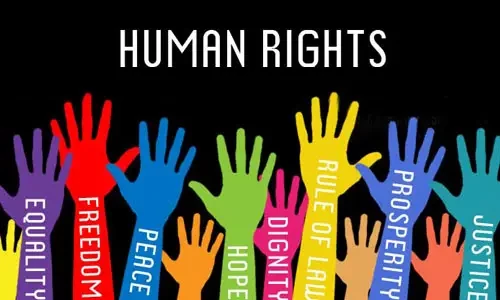
guest column:R Paneir Selvam
SINCE 2017, the Ansar al-Sunna insurgent group which is associated with ISIS evacuated more than 430 000 people from Cabo Delgado province in northern Mozambique. Last month, these terrorists beheaded more than 50 people in the same province. Some local youths are attracted to this group’s false ideology because of poverty and unemployment issues.
Last August, two female suicide bombers killed more than 14 people and at least 70 people were injured in Jolo, Southern Philippines. These attackers, who are widows of slain terrorists, used improvised explosive devices to kill innocent people and a number of security forces. Further, they were affiliated to the Abu Sayyaf Group (ASG) which is known as Islamic State — East Asia Province. This suggests that the terrorist attacks are being led by females and young people.
According to the recent American Enterprise Institute (AEI) report on youth and terrorism, terrorist groups like ISIS and al Shabaab designated the role of young women as that of wives and mothers. Elsewhere, Boko Haram use the young women and girls as suicide bombers. Nowadays, female terrorists are playing a prominent role in these groups and in most cases, they are not detected by the security and intelligence agents.
The security landscape Since 19 years ago, the landscape of international security has changed drastically. Terrorism and terrorist activities do not restrict themselves to one territory or region. Terrorism is becoming a global issue. It has expanded from north to south and from west to east. After Al Qaeda was defeated, the world has seen more atrocities committed by ISIS. A couple of years ago, this group also had been defeated.
In the Indian subcontinent and Afghanistan, there are new terrorist groups which are affiliated, either to Al Qaeda, ISIS like Al-Qaeda in the Indian Subcontinent (AQIS), Jamaatul Ahrar, Hizbul Ahrar and Jamaatul Ahrar or Hizbul Ahrar.
In 2018, under the US Immigration and Nationality Act (INA), the Secretary of State included the ISIS-Philippines ISIS-West Africa, ISIS-Greater Sahara, al-Ashtar Brigades (AAB), Jama’at Nusrat al-Islam wal-Muslimin (JNIM), Islamic Revolutionary Guard Corps (IRGC) and Asa’ib Ahl al-Haq (AAH) as foreign terrorist organisations, The re-emerging of Al Qaeda and ISIS with their affiliated groups is a matter of concern. The security and intelligence agencies may have succeeded in eliminating the leaders of these groups but failed to eliminate the core ideology. This ideology has been subscribed to by sympathisers and supporters of these groups and most of them are acting independently to achieve their “noble” goal by killing innocent people.
In July, the UK Defence Secretary, Ben Wallace said ISIS’s ideology was poisonous and there was a possibility for this group to resurfaced. Further, he said the ideology was still intact, and ISIS remained the dominant security threat to the UK.
- Chamisa under fire over US$120K donation
- Mavhunga puts DeMbare into Chibuku quarterfinals
- Pension funds bet on Cabora Bassa oilfields
- Councils defy govt fire tender directive
Keep Reading
The new paradigm of a terrorist attack no longer requires a well-co-ordinated system backed by huge financial assistance, but rather can be executed by the lone wolves with less monetary support.
The terrorist groups are re-emerging because the ideology is tenacious. Therefore, lone wolf terrorist attacks become conspicuous. For the intelligence and security agencies, this type of attacks becomes very challenging to be detected and prevented.
The present danger Last October in Paris, Samuel Paty was brutally beheaded by a terrorist from Chechnya, Abdullakh Anzorov who was 18 years old. Anzorov used a cleaver way to kill Paty. He had lived in France since 2008. Seven people were charged in the court including two students and a parent of one of Mr Paty’s students.
Meanwhile, in Nice, France — Brahim Aouissaoui a migrant, who arrived in September from Tunisia murdered three people in the Notre-Dame basilica. One of the victims was partially decapitated. He was 21 years old and used a knife to carry out the attack.
Vienna is one of the safest cities in the world. The city’s reputation was dented in early November when a 20-year-old suspected terrorist, Kujtim Fejzullai, killed four people and hurt more than 20 others. Prior to this attack, he was imprisoned for trying to travel to Syria to join ISIS and was released earlier because he was young.
The incidents in Paris, Nice and Vienna exposed that the false ideology of the terrorist group is deeply ingrained in the youth. The poverty, unemployment, racial and religious discrimination issues are used by the handlers of terrorist groups to recruit young people and women. Later, they will be brainwashed to commit atrocities against innocent people in the name of religion.
Further, these perpetrators are influenced by propaganda and they believe they do it to protect or take revenge on behalf of their “brothers” and “sisters”. Unfortunately, they are misguided by deceitful preachers in the name of the religion.
Conclusion The face of terrorism is always evolving. The method and mode of a terrorist attack is becoming unpredictable. The terrorists always find an opportunity to launch their fatal attacks like in Nice, Paris, Vienna and Cabo Delgado. They are using females and young people to conduct their attacks to evade detection by the intelligence agents.
Therefore, the intelligence and security forces should not underestimate the ability of these terrorist groups. The tactics of these groups are shifting to use of non-conventional weapons like household knives and vehicles. In addition, they are also using fake suicide vests to deceive the security forces and the public to “protect” themselves.
In the meantime, detecting any attacks conducted by a terrorist is very perplexing for these agencies. Therefore, the family members or friends of suspected terrorist/supporter/sympathiser must play a proactive role by alerting the relevant agencies.
Furthermore, intelligence and security services must partner with religious authorities to build an effective narrative against the false ideology of terrorist groups. In addition, to counter the propaganda materials used by the terrorist groups, they can also use artificial intelligence (AI) to detect and eliminate such materials before they are circulated publicly.
In a nutshell, political and religious leaders need to desist from making inflammatory and insensitive remarks which upset a particular group of people. Thus, the approach taken by Jacinda Ardern, the Prime Minister of New Zealand in the wake of the Christchurch attack is highly commendable as opposed to the approach taken by French President, Emmanuel Macron.
Further, the religious and community leaders must take a bold stance to alienate the perpetrators instead of supporting them. These leaders also must show empathy for the victims and the victims’ families.











